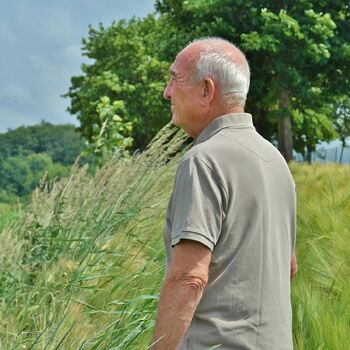Making strides to good health

Walking builds lower body strength and increases balance and flexibility.
By Elizabeth Nuzzi, Physical Therapist, Elder Service Plan.
The secret to successful aging is ... exercise! Exercise not only helps to keep our bodies fit and healthy, but it also maintains our independence and is good for our overall mental well-being and quality of life. As seniors grow older, the many benefits of exercise increase, making it more beneficial for older adults to begin a basic walking routine.
Beginning a new walking program can be hard, but it is worth it in the long run. It’s best for seniors to start with a simple goal in mind, such as gradually increasing walking time or distance every week, depending on tolerance. Try choosing a certain time of day to walk, such as early in the morning, or after dinner. An evening stroll can also help seniors relax for bedtime; research has shown that it can increase the quality of sleep in older adults. Another challenge with starting a walking routine is the monotony, so varying where you walk (indoors, outdoors, different routes or paths) can make a difference, and keep you motivated. And remember, walking programs can be just as beneficial for many seniors with pre-existing physical disabilities, including those who use walkers, canes, and other ambulatory devices. Here are a few of the benefits of walking for older adults:
Managing weight
Many seniors’ metabolism lowers as they age making it harder to lose weight without a significant lifestyle change. According to AARP, when combined with healthy eating habits, physical activity can help to control weight. When seniors are within a healthy weight range, they are less likely to suffer from diabetes, heart disease and stroke.
Decreasing risk of heart disease
Walking reduces the risk of heart disease by increasing good cholesterol and lowering high blood pressure. According to AARP, walking briskly for only three hours each week can lower a senior’s risk of a heart attack. In fact, just by walking this minimum amount, women have a 30 to 40 percent lower risk of heart disease. Furthermore, research published in the American Journal of Preventive Medicine shows that even some walking is better than none for reducing all-cause mortality in older adults.
Improving balance and decreasing fall risk
Because many seniors are more prone to falls as they age, it’s nice to know that walking can help. In an article by Harvard Health Publications, walking builds lower body strength and increases balance and flexibility. When seniors have poor balance, they are more likely to fall and cause injuries such as hip fractures.
Increasing social opportunities
By walking with others, seniors have an increased opportunity to socialize and often feel less isolated. Not only does walking with friends increase social opportunities, but it can also help to increase positive endorphins that reduce the likelihood of depression and anxiety.
Strengthening bones and keeping joints flexible
Walking can help older adults relieve arthritis and back pain while strengthening bones and improving joint and muscle flexibility. While many people believe that exercise can make arthritis pain worse, research shows that the opposite is actually true, it decreases disability and pain in those with osteoarthritis. According to another article by Harvard Health, taking walks during the week can help to ease pain and improve symptoms of arthritis such as fatigue and joint stiffness. These symptoms will improve over time as the routine becomes more normal. Before beginning a walking or exercise routine, it’s important to talk to your doctor and physical therapist, as they may have more information that can help you tailor the program to your particular situation.
Disclaimer
This articles provide general information for educational purposes only. The information provided in this article, or through linkages to other sites, is not a substitute for medical or professional care, and you should not use the information in place of a visit, call consultation or the advice of your physician or other healthcare provider.